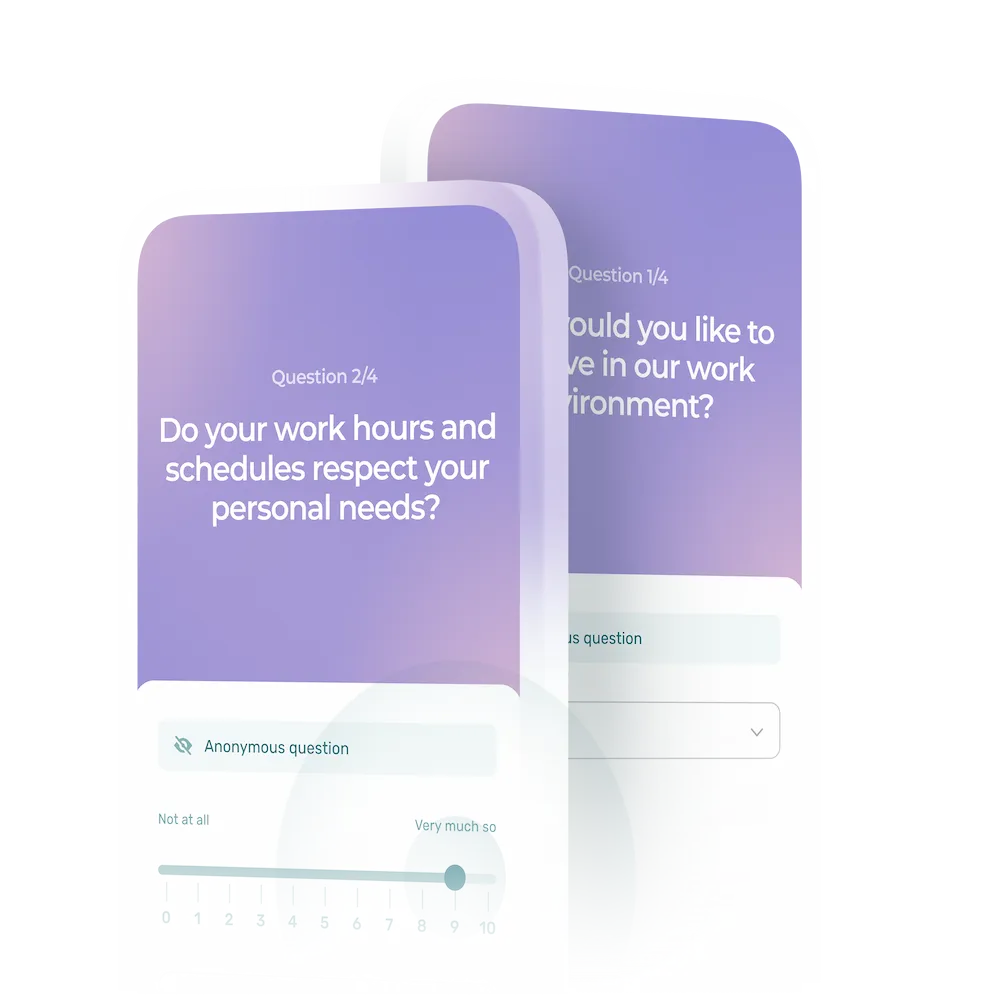An employee training plan is a powerful management and retention tool.
It helps better structure not only the training that employees must take in order to perform their tasks efficiently and independently, but also their professional development.
A training plan is a key strategic tool for companies interested in retaining their employees and having a competent team to serve their customers.
Providing employees with professional development is also a great way to allow them to grow within your company and promote internal mobility.
This will allow you to adapt more quickly to changes in your industry, enhance employee performance and motivation, and create an attractive employer brand.
Let’s look at what you need to know to craft a training plan tailored to your business.
5 Steps to a Comprehensive Employee Training Plan
1. Take Stock of Your Current Practices
To design a detailed, well-structured training plan, you need to start by assessing your practices, so you have a starting point.
This will allow you to determine what you can improve in your management practices.
Here are some questions to get you started:
- Do you offer training to your employees? If so, what specifically?
- Do you have an earmarked budget?
- Do you have any legal obligations pertaining to employee training?
- Do you have a substantial number of employees to train?
- Do you hire mostly full-time, part-time or seasonal employees?
- Do you keep track of your employees’ training in their employee records?
- Do your employees need to update their skills regularly?
Don’t hesitate to consult with other managers at the company and even your employees to get a realistic and detailed picture of your practices. Use anonymous surveys to gather feedback from team members.
Legal Obligations
Did you know that some companies have legal obligations when it comes to employee training?
In Quebec, companies with a payroll of more than $2 million are required to allocate a budget equivalent to at least 1% of their payroll to training activities aimed at developing their employees’ skills.
2. Narrow Down Your Goals and Needs
Once you have a better idea of your management practices, you can define the strategic direction you want to take. Your goals and needs directly tie in with the types of training to include in your plan. That’s why this step is vitally important.
For example, a retail manager might want to reduce employee turnover. They may therefore decide to invest in training on employee management and to offer more in-depth employee training on company products.
A restaurant owner might instead opt for in-depth wine training to enhance their customer experience. Or a call centre might want to reduce customer wait times by offering more mentoring for new employees.
Here are some examples of goals to inspire you:
- Improving your retention rate
- Facilitating internal mobility
- Reducing customer service wait times
- Improving customer satisfaction
- Connecting your team members
Remember to quantify your desired outcomes. If the goal is to decrease your turnover rate, set a realistic target. To help you with this, use data from your HR dashboard or employee management software.
If you’re having trouble coming up with a success indicator, your goals may still be a little too vague. Try to make them as specific as possible.
💡 Be sure to identify realistic and relevant goals. The SMART method can be very helpful with this.
3. Make a List of Possible Training
Finally, it’s time to get down to brass tacks and make a list of the training you want to offer your employees.
Start by identifying the more general training you would like all employees to take, regardless of their position at the company. This training typically takes place during new recruit onboarding.
Here are some examples:
- Occupational health and safety training
- Presentation of the company’s history and activity sector
- Introduction to the company’s mission and values
- Presentation of HR operations (scheduling, communication, leave requests, etc.)
- First aid training
- Training on the company’s products or services
You can also provide job-specific training or have employees take specialized training to develop their skills.
Remember to document training plans in each employee’s record. To make this easier, use employee management software that lets you better manage your company’s HR data.
💡 Take into account the employee feedback that you collected in step 1.
4. Set a Budget
This step is crucial as it will determine what you are able to offer your team. It’s important to try to be as specific as possible in order to stay within budget and avoid surprises at the end of the year. 💵
Don’t hesitate to ask for quotes for training that requires outside resources, so you have a better idea of the expenses involved.
💡 If you have a smaller budget, organize training directly on your premises using your internally available resources.
5. Implement Your Training Plan
Finally, after all this hard work, it’s time to share your training plan with your employees.
If your training plans are personalized, introduce them during one-on-one meetings with each employee so you can answer all their questions. If not, unveil the plan at a team meeting.
Take the time to explain your approach and give down-to-earth examples so that your team will better understand the positive impacts it will have on their work.
Once your training plan is in place, don’t forget to track the results and make any necessary tweaks.
💡Make it a habit to send a satisfaction questionnaire to your employees after each training.
Examples of Company Training Plans
Using a training plan template will make it so much easier for you to develop training plans for your team members.
A training plan should always contain the following:
- Name of the training
- Duration
- Objectives
- Connection to the company’s strategies
- Date of the training (and whether it’s recurring)
- Cost
To give you an idea of what a training plan looks like, here are two concrete examples.
Example of a Training Plan for a Waiter
General training:
- Schedules and communication (15 minutes)
- The timekeeping system and time-off requests (10 minutes)
- Occupational health and safety training (1 hour): to be taken yearly
Total cost: 0 except for employee time (in-house training).
Specific training:
- Restaurant opening and closing (2 hours)
- Using the payment system (30 minutes)
- Presentation of the complete menu, including food and drinks (2 hours)
- Mentoring with an experienced waiter (1 shift)
Total cost: 0 except for employee time (in-house training).
Specialized training:
- Menu tasting (2 hours): to be undergone when the menu is changed
- Introductory course in wine stewardship (1 day)
- Specialized service techniques (4 hours)
Total cost: $1,000.
Example of a Training Plan for a Supermarket Cashier
General training:
- Schedules and communication (15 minutes)
- The timekeeping system and time-off requests (10 minutes)
- History of the company (30 minutes)
- Occupational health and safety training (1 hour): to be taken yearly
Total cost: 0 except for employee time (in-house training).
Specific training:
- Supermarket opening and closing (2 hours)
- Using the payment system, including purchases and reimbursements (30 minutes)
- Counterfeit-bill detection (15 minutes)
Total cost: 0 except for employee time (in-house training).
Specialized training (after 1 year on the job):
- Shift supervisor training (3 hours)
- Customer complaint-management training (2 hours)
Total cost: 0 except for employee time (in-house training).
The Key to a Successful Training Plan
The secret ingredient to a successful training plan is to be attentive to your employees’ feedback. After all, they are at the heart of your strategy.
Also, don’t hesitate to regularly adjust your training plans to keep them up to date.
Happy planning!











